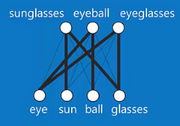Tag: Visual edit |
|||
| Line 42: | Line 42: | ||
Somewhat related concepts: |
Somewhat related concepts: |
||
*can be low inertia, like [http://brianpansky.wikia.com/wiki/Open_Mindedness proper open mindedness] VS high inertia stuff like [https://the-orbit.net/brutereason/2016/12/27/hypocrisy-often-just-tribalism/ tribalism] |
*can be low inertia, like [http://brianpansky.wikia.com/wiki/Open_Mindedness proper open mindedness] VS high inertia stuff like [https://the-orbit.net/brutereason/2016/12/27/hypocrisy-often-just-tribalism/ tribalism] |
||
| + | *"destabilize" a conclusion or something. Basically, showing that the support for the conclusion is not so conclusive or strong. |
||
*[[How Do Things Happen?|causation]] VS [https://www.richardcarrier.info/archives/9265 correlation] |
*[[How Do Things Happen?|causation]] VS [https://www.richardcarrier.info/archives/9265 correlation] |
||
[[File:Deeplearningthing2.png|thumb|"Deep Learning", recognizing arrangements of parts into patterns.]]Clearly in many cases both ends of these spectrums are useful. Shorthand is quick and useful sometimes, but other times we have to go "down" to the details to figure things out for sure. |
[[File:Deeplearningthing2.png|thumb|"Deep Learning", recognizing arrangements of parts into patterns.]]Clearly in many cases both ends of these spectrums are useful. Shorthand is quick and useful sometimes, but other times we have to go "down" to the details to figure things out for sure. |
||
Revision as of 16:15, 8 July 2019
“____ is ____.”
“X is Y.”
“This (person, action, item, etc.) is (a) that.”
This kind of statement is name calling.
Essentially, it’s a conclusion, or an assertion. It doesn’t include much, if any, support for the conclusion.
Using mere name calling will leave many of the most important questions unanswered:
Is X really Y? Are you sure that X isn’t something else instead? How sure? What does it mean for something to be Y? What is Y? Is Y good or bad in this case? Why? Compared to what alternatives? How sure are you?
Unlike Wikipedia, I don’t only regard something as name calling if it is an insult. It could be praise (“he’s a straight talker”, “genius”, “saint”). Nor do I limit it to targeting people. It could target actions (“telling it like it is”, “pandering”, “virtue signaling”) or beliefs or policies or anything else. Because the same concerns can arise for all of these kinds of name calling, and they share a lot of things in common, the same form, and because the name fits.
Suggested use
Brute Reason posted a link on facebook to the article Why Do Conservatives Think Words Are Magic?, and someone asked:
- "I have seen this trend of word mimick in even the lowest stratta of the conservative alt-right. I was wondering what your thoughts on this article were, and if you had any ideas on how to counteract or disempower this."
I responded with:
"Labels are useful shorthand to communicate with people who mostly share your views. They may not successfully communicate with people who don't share your views, because labels hide the details, and thus cause (or seem to cause) legitimate misunderstanding between people with significantly different ideologies. Even if the people disagreeing with you are being disingenuous (or whatever), the way to cut to the chase is to say (and keep the conversation focused on) what you mean, rather than using labels."
Similar Concepts
Seems to be related to information compression. Summarizing lots of info in a short form.
- from premises to conclusions (and premises can be the conclusions of further premises, all the way down to raw experience)
- scientific data VS hypothesis/model/theory/philosophy/metaphysics, etc.
- full text, and summary of the text (see: aggregation)
- Graham's Hierarchy of Disagreement lists "name calling" as the lowest type of argument in a disagreement, and the highest is explicitly refuting the central point.
- conceptual "deconstructing" VS "constructing"
- "complicating the narrative" VS "simplifying the narrative"
- "image" and "word" [metaphorical]
- (in art, story writing) "showing" VS "telling"
- perhaps confusion VS epiphany could be related
- a person's actual actions and work, VS the credentials they have
- "cognitive decoupling" VS "coupling"/"holistic"/"contextualizing"
Somewhat related concepts:
- can be low inertia, like proper open mindedness VS high inertia stuff like tribalism
- "destabilize" a conclusion or something. Basically, showing that the support for the conclusion is not so conclusive or strong.
- causation VS correlation

"Deep Learning", recognizing arrangements of parts into patterns.
Clearly in many cases both ends of these spectrums are useful. Shorthand is quick and useful sometimes, but other times we have to go "down" to the details to figure things out for sure.
Also, the pattern recognition done by artificial neural networks does this. There are many input nodes, and a pattern is recognized, so it is able to output fewer nodes.